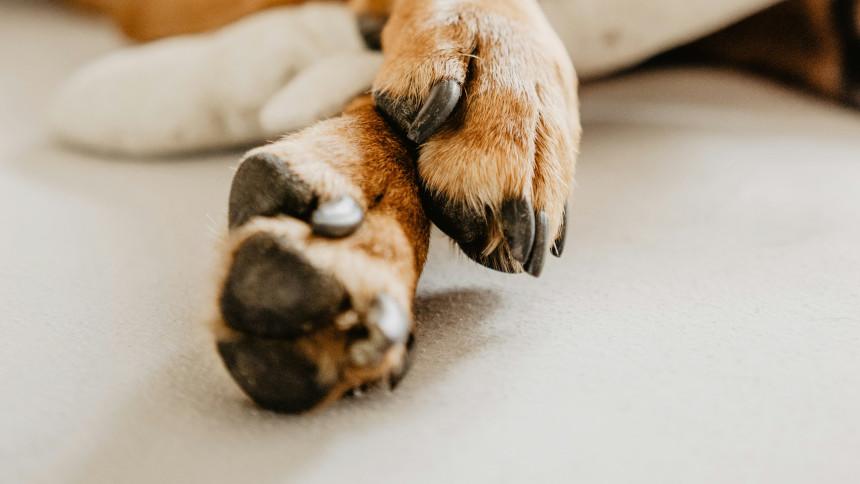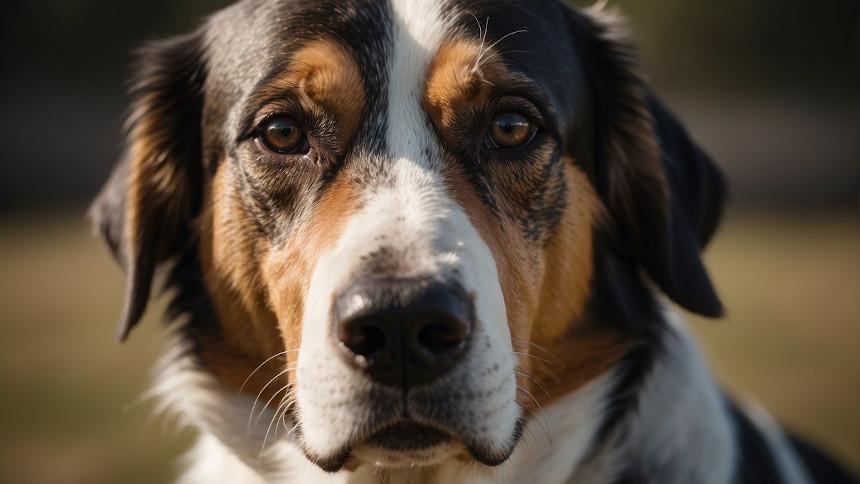Discovering missing fur on a dog’s leg is a concern for pet owners, signaling a variety of potential health issues. Hair loss in dogs can stem from multiple causes ranging from hormonal imbalances and immune disorders to parasites and skin infections. When a dog experiences hair loss on its leg, it may be accompanied by other symptoms like changes in appetite, weight fluctuation, and alterations to skin condition. Such symptoms are often key indicators of the underlying cause and guide appropriate treatment strategies.
The occurrence of hair loss on a dog’s leg may be localized, resulting from factors such as trauma or contact with irritants, or it could be part of a systemic issue affecting the entire body. Alopecia, the medical term for hair loss, can also be a result of genetic predispositions or certain medical treatments. While some causes of alopecia, such as normal aging or superficial wounds, might require minimal intervention, other conditions necessitate comprehensive veterinary care.
It’s essential for dog owners to observe the condition closely and consider various factors such as the pattern of hair loss, any accompanying symptoms, and potential exposure to harmful substances. Early detection and diagnosis are crucial in managing the condition effectively and ensuring the dog’s comfort and health. A veterinarian would perform a thorough examination, possibly including skin scrapings, blood tests, and hormone evaluations to determine the cause of hair loss and recommend the appropriate treatment.
Understanding Hair Loss in Dogs
Hair loss in dogs can stem from a variety of factors, ranging from genetic predispositions to environmental triggers. Recognizing the common causes and symptoms can help owners address alopecia effectively.
Common Causes of Canine Alopecia
- Genetics: Certain breeds are more prone to alopecia due to hereditary factors.
- Hormonal Imbalances: Conditions such as hypothyroidism can lead to hair loss.
- Parasites: Fleas, mites, and mange are common culprits causing coat health issues.
- Infections: Fungal and bacterial infections may lead to hair loss.
- Allergies: Reactions to food or environmental allergens can manifest as skin and coat health problems.
Symptoms and Patterns of Hair Loss
- Patchy Loss: Alopecia often presents as distinct bald patches on a dog’s body.
- Full Coat Thinning: A more generalized thinning of the coat occurs in some cases.
- Skin Changes: Accompanying skin irritation or infection may be visible.
- Shedding vs. Baldness: It’s important to distinguish between normal shedding and actual baldness. Normal shedding is seasonal and uniform, while hair loss from alopecia is abnormal and patchy.
Medical Diagnosis and Veterinary Procedures
When a dog presents with missing fur on its leg, a veterinarian will conduct a thorough medical diagnosis to uncover the underlying causes. The process includes an initial consultation and a series of diagnostic tests that are crucial in determining the appropriate treatment plan.
Initial Veterinary Consultation
The diagnosis begins with a physical examination by a veterinarian. This examination is likely to focus on the area of fur loss, looking for symptoms like redness, swelling, or signs of itching. A detailed history is obtained from the owner, which may include questions about the onset of hair loss, any changes in the dog’s environment, diet, or behavior, and previous medical issues.
Diagnostic Testing
To identify the cause of fur loss, the veterinarian may order a range of diagnostic tests:
- Blood tests: These can reveal issues such as hormonal imbalances, infections, or systemic diseases.
- Skin scrapings: By analyzing skin cells under a microscope, veterinarians can detect conditions like mites, fungi or bacterial infections.
- Biopsy: In cases where the skin changes are localized and well-defined, a biopsy may be indicated to rule out tumors or localized infections.
- Allergy testing: If an allergic reaction is suspected, allergy tests can identify specific environmental or dietary allergens causing the symptoms.
These tests, combined with the initial consultation, help veterinary professionals form a diagnosis to guide the next steps in treatment, which may involve medication and other veterinary medicine interventions.
Diseases and Infections Causing Fur Loss
Several diseases and infections can lead to fur loss in dogs, primarily through parasitic infestations, bacterial and fungal infections, and various underlying health conditions. Identifying the cause is crucial for effective treatment.
Parasitic Infestations
Mites and fleas are common parasites that can cause significant fur loss. For instance, sarcoptic mange, caused by the Sarcoptes scabiei mite, leads to intense itching, resulting in fur loss. Demodex mites, causing demodectic mange, can also trigger fur loss, particularly on legs where fur is thinner.
- Causes: Mite or flea infestation
- Inflammation: Due to the body’s response to the infestation
- Infection: Secondary bacterial infections can occur
Bacterial and Fungal Infections
Bacterial infections often present themselves in localized patches, while ringworm, a fungal infection, can result in circular areas of fur loss. Yeast infections may lead to fur loss accompanied by a distinctive odor and discoloration of the skin.
- Bacteria: Staphylococci (common), resulting in patchy fur loss
- Fungal: Ringworm, identifiable by circular patterns of fur loss
- Yeast Infection: Often occurs in skin folds; recognition includes smell and presence of inflammation
Other Underlying Conditions
Non-parasitic issues like hypothyroidism can lead to symmetrical hair loss on the body, including the legs. Skin inflammation due to allergies can cause fur loss too. Less commonly, skin cancer may be a more serious underlying cause of localized fur loss.
- Hypothyroidism: Often results in symmetrical hair loss
- Allergies: Can lead to scratching and subsequent fur loss
- Cancer: In rare cases, skin cancer can manifest as fur loss
Treatment Options and Home Care
When a dog experiences hair loss on their leg, it is crucial to address both the underlying cause and the symptoms. Appropriate pharmaceutical treatments and supportive home remedies can work in tandem to aid recovery.
Pharmaceutical Treatments
Medications: The choice of medication largely depends on the diagnosed cause of hair loss:
- Antibiotics are used if a bacterial infection is present, requiring either oral or topical administration.
- Antifungals help treat yeast and ringworm infections, available both orally and topically.
- Antihistamines and corticosteroids can alleviate itchiness caused by environmental or flea allergies.
- Mite-specific treatments, such as Ivermectin, can be administered if mites are the culprits.
Surgery may be necessary in cases where tumors or growths are the underlying causes of hair loss. It is important to consider the cost and the recovery time when opting for surgical solutions.
Supportive Home Remedies
Nutrition and Supplements: Adequate nutrition plays a pivotal role in maintaining healthy skin and fur. Supplements rich in omega fatty acids and Vitamin E might improve skin condition if nutritional deficiencies are to blame.
Skin Care: Use gentle, medicated shampoo to treat the skin without stripping it of natural oils, addressing issues like dry, flaky, or itchy skin. Regular brushing keeps the coat healthy and distributes natural skin oils, potentially reducing dandruff and the formation of calluses.
Home Environment: Keep your dog’s environment clean to minimize the risk of dandruff or crusty skin caused by dust and other allergens. Regulating temperature can also prevent the skin from becoming too dry.
Natural Options: Applying coconut oil may provide relief from itchiness, and it has properties that can help alleviate dry skin. However, it should not replace pharmaceutical treatments but rather support them.
Stress Reduction: Minimize stress, as it can exacerbate skin conditions, leading to increased hair loss. Keeping your dog comfortable and stress-free can promote a faster healing process.
Note: Before starting any home remedy, it’s advisable to consult with a veterinarian to ensure it complements the prescribed treatment and addresses the specific needs of the individual dog, such as those unique to Dachshunds, who may be predisposed to certain skin conditions.
Prevention and Management of Hair Loss
Effective prevention and management of hair loss in dogs require a detailed understanding of the underlying causes and a targeted approach to treatment. Ensuring optimal skin and coat health and addressing environmental and dietary factors are pivotal to minimizing hair loss.
Improving Skin and Coat Health
Maintaining the health of a dog’s skin and coat starts with regular grooming and proper care. Brushing the coat not only removes debris and loose hair but also stimulates the blood flow to hair follicles, which can promote healthier hair growth. In breeds such as Boxers, Cocker Spaniels, and French Bulldogs, where skin conditions are more common, this is particularly important. Owners should also be vigilant for signs of hot spots, pustules, or bald spots that can indicate more serious conditions, including hormonal imbalances like Cushing’s disease or infections from parasites such as fleas and lice.
Dogs may develop pressure sores or experience hair loss from friction, which can be preventable with proper bedding and a well-fitted harness or collar. Symmetrical hair loss could signify an underlying endocrine disorder, and veterinary attention is essential for a correct diagnosis and treatment plan.
Environmental and Dietary Factors
Environmental and dietary factors play a significant role in the health of a dog’s skin and coat. Food allergies can result in itchy skin and subsequent hair loss. It’s crucial to identify any allergens and eliminate them from the dog’s diet. A balanced diet rich in essential fatty acids can support skin health and reduce the likelihood of hair loss.
Changes in the environment, such as the onset of spring, can also lead to increased hair loss due to the natural shedding process or the emergence of seasonal allergies like flea allergies. Proactive flea control and regular monitoring for parasites are essential. By reducing exposure to environmental allergens and improving nutritional intake, many cases of hair loss can be managed effectively, and in some situations, hair loss may be entirely preventable.
When to Seek Immediate Veterinary Attention

In certain instances, a dog missing fur on its leg indicates more than a benign condition and calls for immediate veterinary care. Pet owners should promptly consult a veterinarian if they observe any of the following symptoms accompanying hair loss:
- Severe Reddened Skin or Hot Spots: Intensely irritated and inflamed areas, commonly known as hot spots, may indicate an underlying problem that necessitates quick medical intervention.
- Presence of Parasites: Evidence of parasites like mites or lice, which may appear as tiny specks moving in the fur or as nits attached to hairs, requires veterinary attention to prevent further skin damage and to manage the infestation.
- Foul Odor: A strong, unpleasant smell emanating from the patchy areas can be a sign of a bacterial infection, which can escalate without proper treatment.
- Rapid Spreading: If the patches of hair loss spread quickly or are accompanied by a sudden change in the dog’s behavior, such as increased lethargy or aggression, this could signify an acute condition demanding immediate veterinary evaluation.
- Behavioral Changes: Should a dog show signs of distress, discomfort, or start excessively licking and biting at the affected leg, this may be a distress signal that veterinary medicine is required.
A veterinarian will assess the dog’s condition, possibly conduct diagnostic tests, and propose an appropriate treatment plan. Early and swift veterinary intervention can greatly improve outcomes, especially in cases where the underlying cause is a serious health issue.








